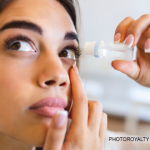 Patients with Sjögren’s syndrome may develop salivary gland mucosa-associated lymphoid tissue non-Hodgkin’s lymphoma (MALT-NHL), a condition that can be lethal. Chiara Baldini, MD, a rheumatologist at the University of Pisa in Italy, and colleagues identified the P2X7 receptor (P2X7R)-inflammasome axis as a potential novel pathway in both Sjögren’s syndrome exocrinopathy and lymphomagenesis. Their research, published online May 15 in the Journal of Internal Medicine, supports the hypothesis that P2X7R mediates the increased production of IL-18 that is, in turn, important for the pathogenesis of lymphoproliferative malignancies.1
Patients with Sjögren’s syndrome may develop salivary gland mucosa-associated lymphoid tissue non-Hodgkin’s lymphoma (MALT-NHL), a condition that can be lethal. Chiara Baldini, MD, a rheumatologist at the University of Pisa in Italy, and colleagues identified the P2X7 receptor (P2X7R)-inflammasome axis as a potential novel pathway in both Sjögren’s syndrome exocrinopathy and lymphomagenesis. Their research, published online May 15 in the Journal of Internal Medicine, supports the hypothesis that P2X7R mediates the increased production of IL-18 that is, in turn, important for the pathogenesis of lymphoproliferative malignancies.1
“In this prospective observational study, through the investigation of the expression of the axis P2X7R-inflammasome in minor salivary gland biopsies of patients with [Sjögren’s syndrome] and different severity in the lymphoid organization, we propose for the first time a putative biomarker likely able to predict the development of this severe complication, suggesting a novel, highly relevant clinical application of the bench determination of this pro-inflammatory platform,” write the authors in their discussion. “We initially started to confirm, in a larger group of patients our previous observations that the P2X7R-inflammasome complex was significantly more expressed in [Sjögren’s syndrome] patients with respect to controls, and even more in those [Sjögren’s syndrome] patients presenting a positivity for anti-Ro/SSA and higher focus score in the salivary gland biopsies. This observation supports the amount of data in favor of the potential involvement of innate immune response in the pathogenesis of [Sjögren’s syndrome], also suggesting that this inflammasome might account for the severity and the complexity of the infiltrate composition.”
Although previous researchers have explored whether polymorphisms in the gene that encodes P2X7R may serve as biomarkers for lymphoproliferative diseases, the results have been contradictory. Similarly, the investigators note that they did not find a difference between the patient populations in the expression of P2X7R in peripheral monocytes. However, they did find increased expression of the P2X7R-inflammasome axis in glandular biopsies that were taken at the diagnosis of Sjögren’s syndrome, years before the development of MALT-NHL. These patients with Sjögren’s syndrome who went on to develop MALT-NHL not only had increased expression of the P2X7R-inflammasome axis, but also had glandular expression of IL-18 that was approximately three-fold higher than controls or patients with Sjögren’s syndrome who did not develop MALT-NHL.
“Our data reinforce the potential role of innate autoimmunity in [Sjögren’s syndrome] glandular inflammation and damage, focusing the attention on the axis P2X7R-inflammasome as a novel potential pathway involved in both [Sjögren’s syndrome] exocrinopathy and lymphomagenesis,” conclude the authors in their paper. “Pending the confirmation of this preliminary observation in larger cohorts of patients, P2X7R-inflammasome axis could represent an interesting biomarker for lymphomagenesis in [Sjögren’s syndrome], opening novel opportunities for the early diagnosis of lymphoproliferative complications and for the development of potential targeted therapies for the disease.”

